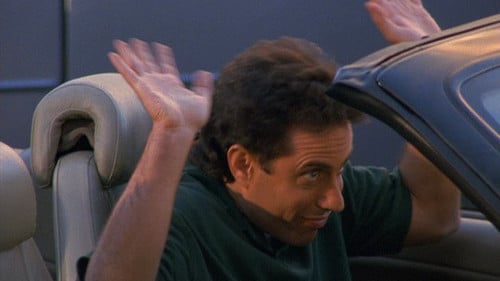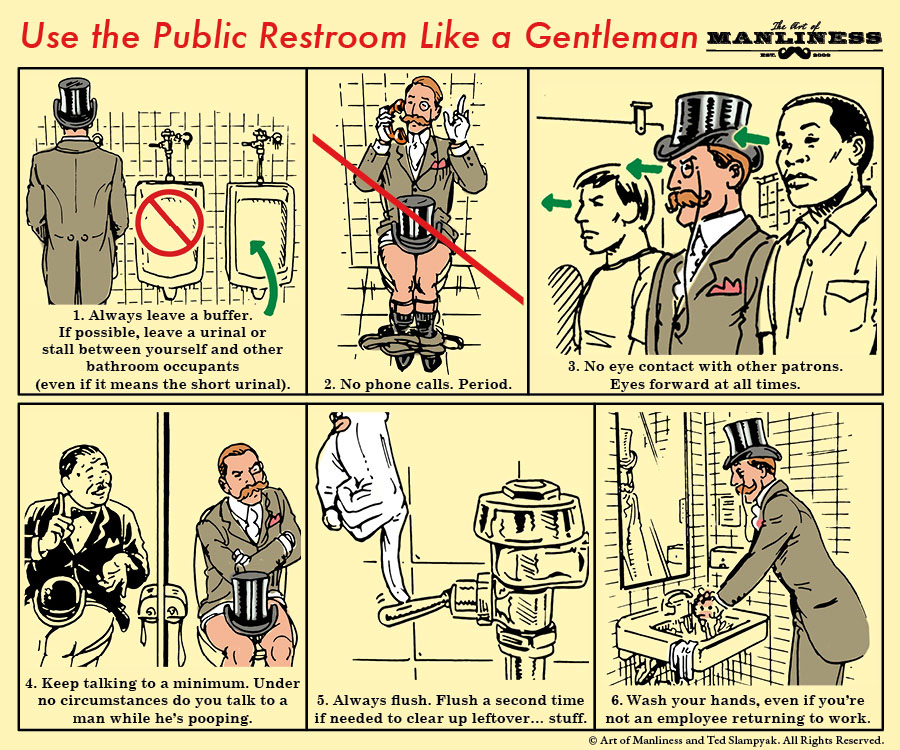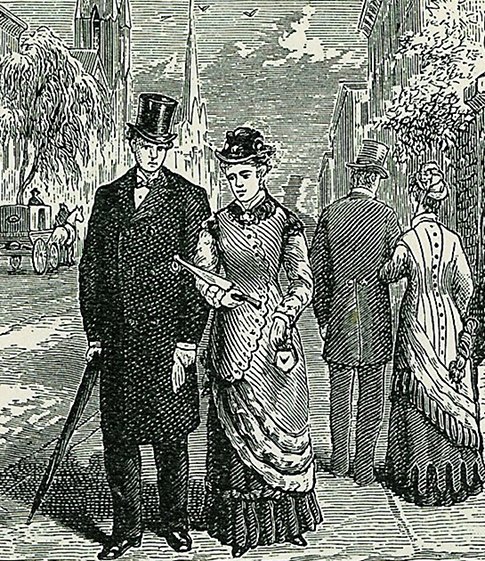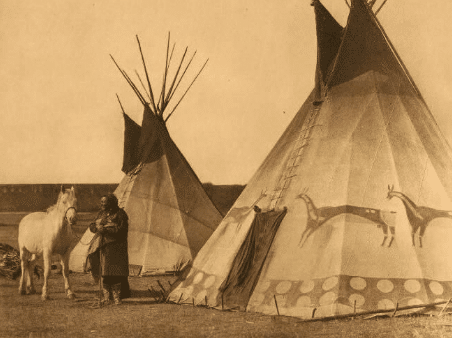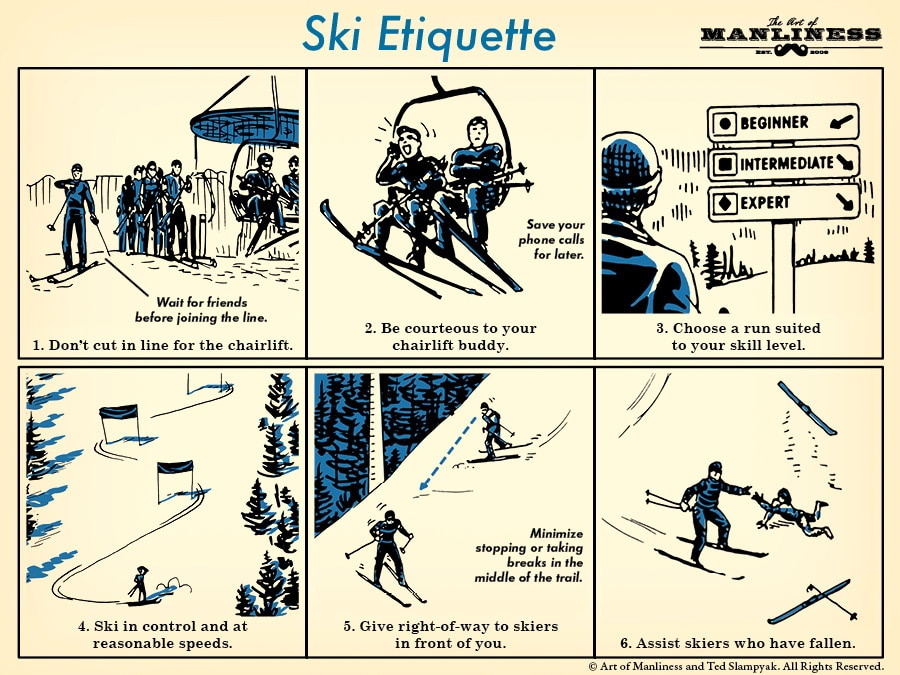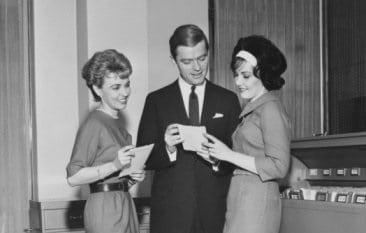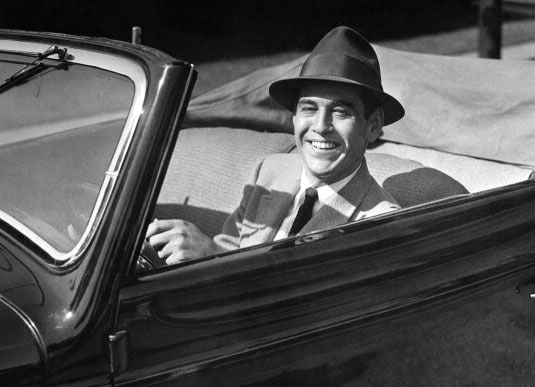
We’ve covered the art of being a gentleman at work, on the field, in the air, and at a party. But there’s one area of well-mannered comportment that often gets ignored: how to be a gentleman on the road.
Motorists behaving badly has its roots in the same thing that plagues internet civility: anonymity. Once we slip into the driver’s seat and close the door, we feel sealed off from the rest of the world; we’re “king of the road,” and the sense of being in a protected pod sometimes gives us license to act in ways we would be ashamed of at more public, face-to-face gatherings.
We could all use some friendly reminders on auto etiquette and how to be a courteous driver from time to time. It’s a set of “manners” that truly meet at the intersection of safety and civility. It can also save you money with your auto insurance company. Being a gentleman behind the wheel not only makes driving less dangerous for everyone, but it also makes what can be a chore at least a little more pleasant.
Some of what we’ll talk about today is already enshrined in law, but often gets ignored. Other indiscretions may technically be lawful but make one’s fellow drivers nuts. There are hundreds of things one could touch on: following the speed limit, always using turn signals before changing lanes or making a turn, how to properly shush a backseat driver, pulling over for emergency vehicles with flashing lights, and the like. What we present below are those points that seem to be most often forgotten when we’re headed down the road, our minds’ on ourselves, zooming toward oncoming traffic.
On the Highway
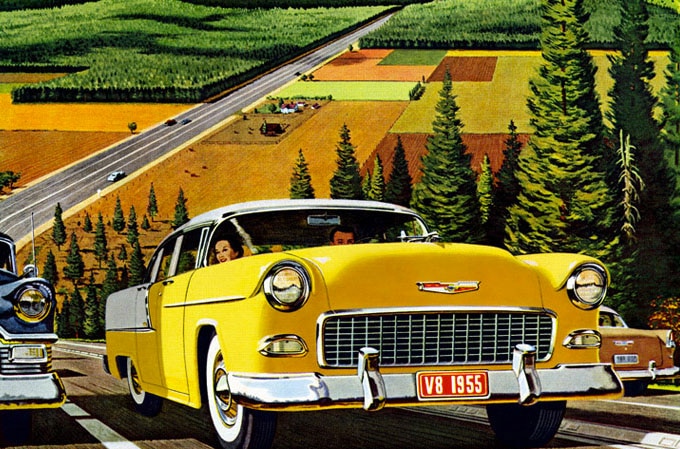
Don’t drive slowly in the left – passing – lane. This is one of those indiscretions that not only is a scourge to everyone’s dad’s blood pressure, but is against the law in many states. The left lane is for passing – all other traffic should stay in the right lanes. Driving slowly in the left lane forces people to pass on the right, and it can also form an impenetrable “roadblock” for the person behind you if you’re going the same speed as the car in the other lane.
If you’re stuck behind a car in the left lane that won’t move over, it’s common to want to tailgate until they get the message, but you run the risk of causing a rear-end accident. Try flashing your headlights instead. For whatever reason it feels a little more uncomfortable to do this rather than tailgating – it’s less passive-aggressive I guess – but it’s safer than riding their bumper. And if you’re the offender, lost in belting out “Total Eclipse of the Heart” while cruising at 60 mph in the left lane, get over as soon as you see someone coming up behind you, and mend your ways ever after (both in your driving and your music choices).
Maintain a consistent speed. One thing left-lane putterers will do to add insult to injury is to accelerate once someone behind them gives up and tries to pass on the right. Then a little while later they’ll slow down again. Many times it’s not even a conscious act; they just aren’t paying enough attention to their surroundings. I remember one road trip where we must have passed, and been passed, by the same car 50 times in 500 miles. Cruise control is your friend, and maintaining a consistent speed helps keep the flow of traffic moving smoothly.
Do the zipper merge. This is admittedly something I’ve been doing wrong all my life and was completely unaware of before researching this article. When you’re cruising a two-lane highway and see a sign saying, “Lane closed ahead,” and instructing you to merge, what do you do? Probably start immediately getting over to the lane that will remain open. You’re a gentleman – you plan ahead! Then, when that lane starts backing up, you curse at the scalawag who speeds past in the open lane right up to the last possible merge point. “That scoundrel!” you mutter. “I hope no one lets him in. And that someday weasels rips his flesh!”
Ah, but here’s the twist. That scoundrel is actually doing it right! This is an instance where it’s possible to go too far with courteous driving.
The safest, most effective way to merge when a lane ends on the highway is the zipper merge. Everyone uses both lanes of traffic until they reach the cut-off point, when they each take turns merging. You can see how it’s done here. This reduces congestion and traffic back-up by as much as 40%. And as these kindly Minnesotans explain, one of the other benefits of the zipper merge is a marked reduction in road rage; next time you see someone driving up to the merge point, instead of becoming enraged, shake your cane and shout, “Huzzah! Carry on good sir!”
On the Streets
Don’t block parking lot entrances/exits. When you’re rolling to a stoplight, try not to come to a stop in front of parking lot exits and entrances. If a person is trying to turn out of one, they’ll be ever so grateful for the space you leave that allows them to make a move.
Let people into traffic when appropriate. In addition to letting people out of a parking lot when you’re coming to a stop, it can be gentlemanly to let someone in front of you when the light turns green and traffic starts rolling again. But just let one guy go; the people behind you deserve to get where they’re going too. And it’s not truly courteous to stop and let someone in when there isn’t congestion and you’re not slowing down for a traffic light; stopping suddenly in moving traffic can be dangerous for the person behind you who isn’t expecting it.
Don’t forget the “thank you” wave!If someone is kind enough to let you out of your neighborhood/parking lot, don’t forget the thank you wave! It’s an acknowledgment of their unnecessary, but very welcome courtesy. Not giving a wave says, “Of course you stopped – I’m entitled.” Call in the weasels this time!
Don’t text or talk on the phone (unless absolutely necessary). This gets enough attention these days that I don’t think I need to say too much. Don’t do it. It’s dumb. It kills people. Having spent half my life with a cell phone and half without, I can remember a time when you didn’t have to be in touch with people while you were driving. You still don’t.
Use the horn honk sparingly. The beep is the equivalent of some guy shouting “HEY!” in an all-pedestrian society. It’s your car’s yell. And like all yelling, it’s jarring, and unless it’s truly needed, can come off as rude. Of course, there are geographic variations in the accepted use of the beep. In New York City it’s just your car’s way of periodically clearing its throat; in Tulsa, I can probably count the number of times I’ve heard a beep in the last few years on one hand. But in general, use your horn sparingly. Employ a loud beep to alert someone else of danger. If the light’s turned green and the person ahead hasn’t moved, give them a 5-second cushion before issuing a short, light beep – one that says, “Go on old chap,” rather than, “Get moving you filthy animal!”
Don’t daydream at the light. On a related note, don’t zone out a stoplight, thinking about how you might look in a pair of Chuck Norris action jeans. Be ready to go when the light turns green.

Don’t “block the box.” The box is the middle of the intersection. People block it when the congested traffic in their lane is moving slowly through a green or yellow light, and when it turns red, their car becomes stranded at the center of the intersection with no room ahead to move up. Gridlock in the cross street results. Don’t try to squeeze through an intersection or crawl through a turn when you’re probably not going to make it all the way (and no, unfortunately, riding the bumper of the car ahead of you as closely as possible will not magically pull you through). Sometimes you just have to bite the bullet and wait out another light cycle.
Pull over for a funeral procession. This is an older tradition that I think is still worth preserving – it doesn’t take that long and it shows respect for the deceased, the bereaved, and the circle of life. You can recognize a funeral procession as a line of cars all with their headlights on in the middle of the day. It’s often led by police cars and/or a hearse, but not always. The idea here is to keep the line altogether, without other cars getting in-between. Obviously safety is always a top concern – if there’s not a shoulder to pull to, don’t do it. But do it when you can.
Don’t blast your music.
Yes, saying this makes me feel about 80, and everyone enjoys listening to their tunes on their favorite radio station as they cruise with the windows down. Just don’t make it so loud that it overpowers the folks in a car next to you at a stoplight. Turn it down a few notches once you start going slower and enter a neighborhood where residents could hear you. And turn down the dial once you pull into a parking lot – especially for church. Being subjected to your Nickelback is no way to begin a worship service, although it may have folks begging for salvation.
Parking
Don’t take up more than one space. I understand that you don’t want anyone to ding your sweet 1994 Camaro, but if you’re concerned about its safety just park far away from other cars at the back of the lot. Sure, you’ll have to walk a little farther, but your personal concern for your car should add inconvenience to your own life, not to others.
Leave ample space between you and the cars next to you. Nobody likes to come out to their car to discover that they’ll have to perform an elaborate shimmy to get back inside it. Even if you have to back out and back in again to get the ratio of space on each side right, take the extra minute to do it.
Keep Your Cool in Any Situation

Road rage can frighten your passengers, cause you to make dangerous driving decisions, lead to a personal confrontation with another driver, and raise your blood pressure. It can also lead to awkward face-to-face encounters later! I’ve heard stories of people flipping off or riding the bumper of someone else in anger, and then both pulling into the same church or office parking lot. Doh! I have an AoM sticker on my car, and as the weather warms up and windows get rolled down, a few times people have pulled beside me at a stoplight, confirmed their suspicion by seeing my mustache, and asked, “Hey, are you the guy who runs the Art of Manliness? I love that site!” It’s made me more aware of my driving; I don’t want someone to say, “Hey are you the Art of Manliness guy? You just cut me off, you summabitch!”
Follow these tips to keep your cool when you’re behind the wheel.
Offer others the same compassion you lavish on yourself. Almost all of us have had a time where we sped, rode people’s bumper, changed lanes like a crazy man, and so on. When we did it, we didn’t feel bad! We had to get to a wedding/birth/job interview, and we couldn’t possibly be late. We attribute our infractions to the circumstances. Yet, when we see other people doing the same thing, we chalk it up to their clear character defect – what a jerk! Yet maybe they’re on their way to the hospital too, eh? Grant others the same kind of leniency you give yourself.
Don’t try to “punish” people yourself. If a driver does something that ticks you off, you may be tempted to ride their bumper, flash your high beams, or prevent them from getting over to your lane to show your displeasure and get some “revenge.” But just like launching a rhetorical takedown of someone on the internet, all this does is make the person more angry and more sure that they’re awesome and you’re the dillweed. But unlike on the internet, there is real physical safety at risk when you stick up for your pride on the road. Showing such a scalawag that he was able to get under your skin and affect your mood just means that he “wins.”
If someone really is driving dangerously, don’t go for short-term satisfaction in harassing them yourself, but instead call the police. They’ll pull them over further down the road.
Offer the “I’m sorry” wave. The gentleman driver isn’t perfect. When you do something unintentionally to inconvenience or endanger someone else ,good etiquette and human decency deem you own up to what you did wrong and give the old “I’m sorry” wave.
